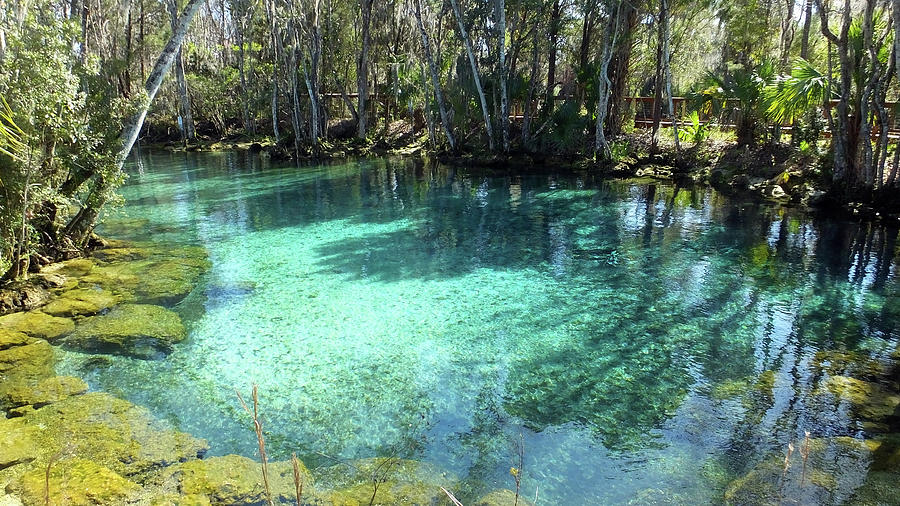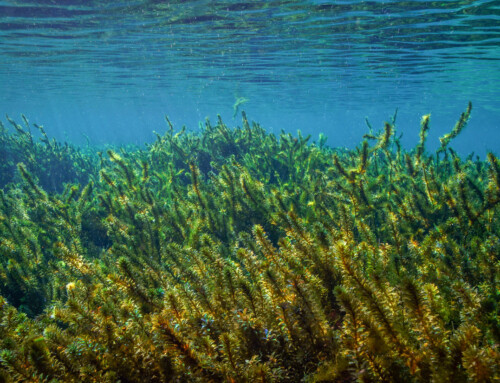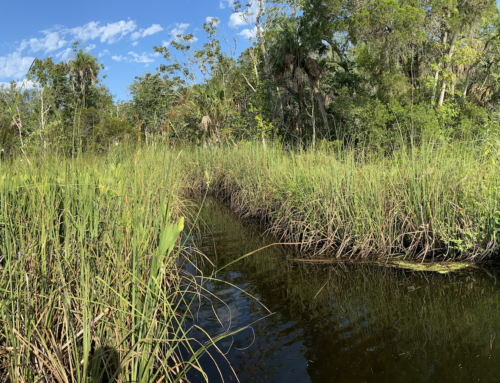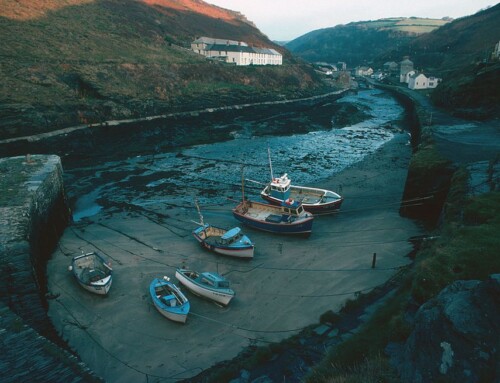Springs
Springs… Not the season, but those bright blue bodies of water we all flock to on a hot summer day. Crystal River is famous for this natural phenomenon that attracts thousands of tourists to Crystal River each year. Remember that age-old question? “Why is the sky blue?” Well, what about springs? Why is Three Sisters Springs blue? To answer this question, we must dive into some chemistry and geology.
To start, a spring is a point in the ground where water flows from the underground aquifer to the surface. When it rains, water naturally seeps into the ground. In order to reach the aquifer, the water passes through pores in rock and sediment. Different layers of sediment have different sized pores which means different solutes, or components dissolved in the water, filter out in different sediment layers. Each layer acts as a filter, so when the water finally reaches the aquifer, it is filtered and fresh. While the water is underground, it cools and remains insulated. This is why Three Sisters stays much cooler than the rest of Crystal River during the summer.
In some parts of the world, the aquifer is naturally closer to the Earth’s surface. When groundwater from the aquifer breaks through the surface, a spring forms. Florida naturally has a low elevation and the aquifers are closer to the surface. This makes Florida the perfect location for springs to appear. For more information about the aquifer and groundwater, click here.
Recently, Save Crystal River has been working in the area around Three Sisters. Not only are they cleaning the riverbed and planting eelgrass, but they also search for clogged springs to clear and reopen. Clearing more spring vents means more freshwater flows into the River, therefore, lowering the salinity of the river. On July 1st, 2020, Save Crystal River’s contractor, Sea and Shoreline, opened three large spring vents just west of the water entrance to Three Sisters.
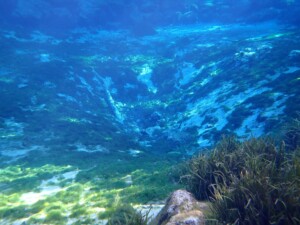
So where does the blue come from?
When I paddled out to see how the Save Crystal River work was coming along, I couldn’t help but stop at the springs and hop into the refreshing water. While I was drifting through the springs, it brought me to the question at hand. Why are springs blue?
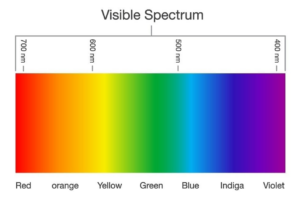
The Visible Light Spectrum
https://www.bluelightblockingglasses.com.au/what-is-blue-light/
To answer this question, we must first address how any object gets its color. Why do apples look red and why does grass look green? While not diving too far into the chemistry, objects get their colors through wavelengths. The visible light spectrum is shown above, and it shows all the colors humans can see with the naked eye. These visible light waves are present all around us bouncing off objects and all around through the atmosphere.
One might think the reason an apple is red is because the red light waves are absorbed by the apple and therefore we see red, but this is not the case; in fact, it is the exact opposite. The apple is red because it absorbs all the colored wavelengths except the red which is reflected. This reflected light is what we see. Take another example – grass. Grass is absorbing all colored light waves except the green waves that we see reflected.
Water in springs is made up of billions of individual water molecules. Each water molecule has a tendency to absorb redder colored light waves and reflect the bluer end of the visible light spectrum. Since the water reflects blue light waves, pure water normally has a bluish tint. In Three Sisters, water molecules are the main contributor to water color. Other bodies of water get different colored tints based on particles in the water. For example, the ocean might look more green because of an abundance of chlorophyll (a green pigment found in plants and algae), or a river might look more brown from high levels of turbid dirt in the water column.
Next time you’re out at Three Sisters, think about how the water you’re swimming through, or paddling on, is rainwater filtered and cooled through rock and colored by individual water molecules. You’re not only swimming through the water we drink and wash our hands with, but also one of nature’s miracles. No wonder the manatees love it!
I’ll see you on the water,
Walker A. Willis
Photo Credit:
Three Sisters Springs Above Water: Judy Wanamaker
Three Sisters Springs Below Water: Explorida
Visible Light Spectrum: The Blue Light Company


